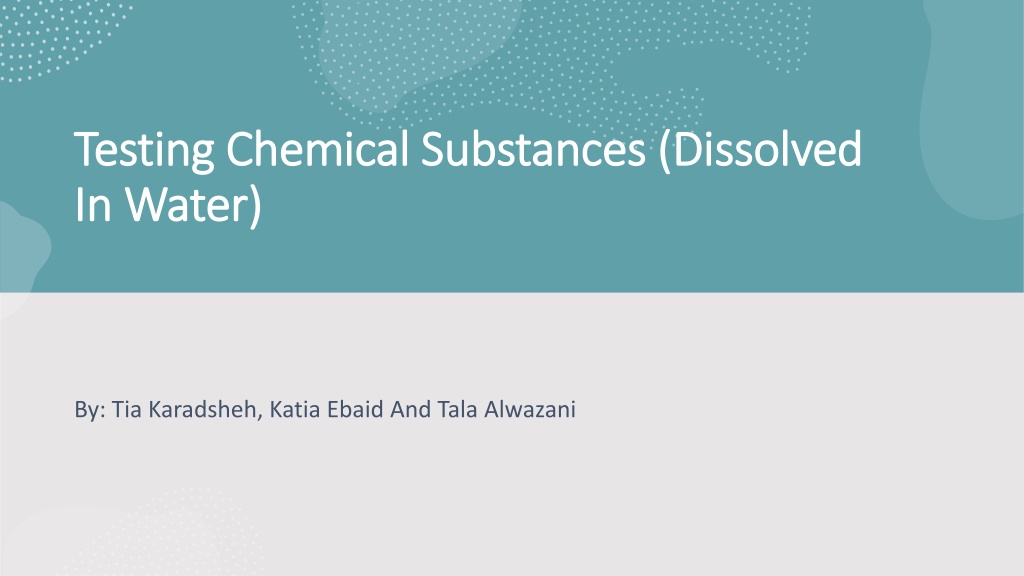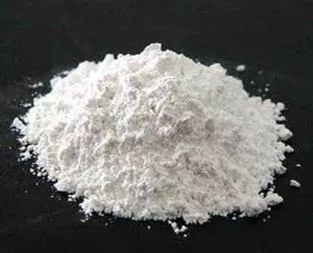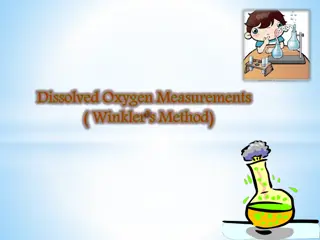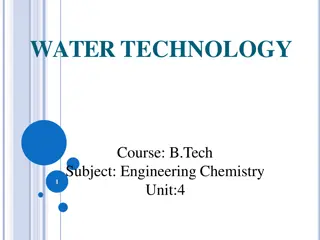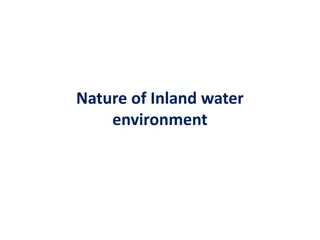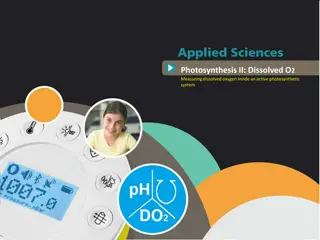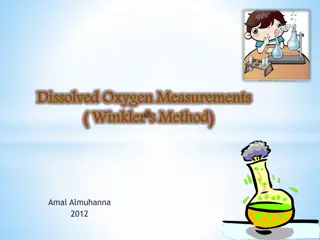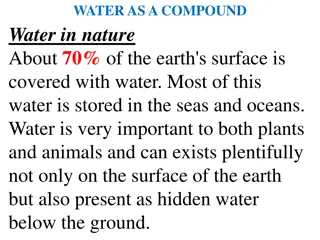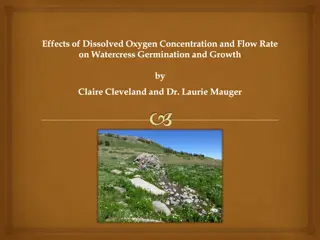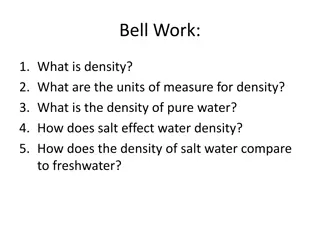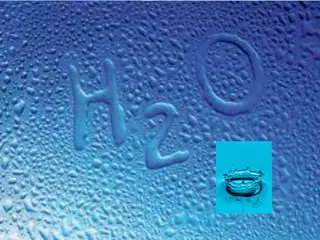Chemical Substances: Dissolved in Water
This article delves into the properties of various chemical substances when dissolved in water, including Calcium Carbonate, Sodium Carbonate, Iron Oxide, Magnesium Sulfate, and Potassium Chloride. It discusses the exothermic and endothermic reactions that occur during dissolution, along with the chemical properties of each substance. Vibrant images provide visual context to enhance understanding.
Uploaded on Sep 14, 2024 | 0 Views
Download Presentation

Please find below an Image/Link to download the presentation.
The content on the website is provided AS IS for your information and personal use only. It may not be sold, licensed, or shared on other websites without obtaining consent from the author.If you encounter any issues during the download, it is possible that the publisher has removed the file from their server.
You are allowed to download the files provided on this website for personal or commercial use, subject to the condition that they are used lawfully. All files are the property of their respective owners.
The content on the website is provided AS IS for your information and personal use only. It may not be sold, licensed, or shared on other websites without obtaining consent from the author.
E N D
Presentation Transcript
Testing Chemical Substances (Dissolved Testing Chemical Substances (Dissolved In Water) In Water) By: Tia Karadsheh, Katia Ebaid And Tala Alwazani
Calcium Carbonate is included in milk and other sources of dairy products such as cheese and yogurt. Dissolving calcium carbonate in water is exothermic, this is because less energy is required to break the bonds in the NaHCO3 and CaCl2 molecules than is released when the CaCO3, NaCl, CO2 and H2O molecules form. Calcium Calcium Carbonate Carbonate (CaCO3 (CaCO3) Chemical property: calcium carbonate is an odorless white powder formed by two main elements: carbon and oxygen.
Sodium Carbonate (Na2CO3) Sodium Carbonate (Na2CO3) We can find sodium carbonate in some types of mineral waters. In addition, large quantities of this salt are used in forming glass. When we dissolve sodium carbonate an exothermic rection occurs, because the energy required to separate the particles of sodium carbonate is less than the energy released by bonding of water molecules to the particles of sodium carbonate. Chemical property: Sodium carbonate forms carbonic acid and sodium hydroxide.
Iron Oxide (Fe2O) Iron Oxide (Fe2O) they are used in pigments found in paints, coatings and colored concrete. Iron oxide takes in and absorbs heat/energy from its surroundings, which makes it an endothermic reaction when dissolved in water. Chemical property: Iron oxide is a chemical complex which occurs naturally comprising iron and oxygen.
Magnesium sulfate (MgSO4)
Potassium chloride (KCl) It can be used as a salt replacer, and it can be found In many other foods including cereals and frozen entrees. Potassium chloride is endothermic when it's dissolved in water, that s because it absorbs heat from its surroundings which makes it an endothermic reaction. Chemical property: Potassium chloride is a colorless, crystalline appearance which is unscented.
